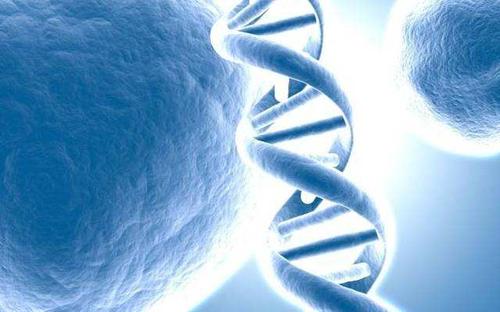Tel: 186-2629-6728
0512-58790813
Fax: 0512-58631806
E-mail:
jszjgct@126.com (business)
fischaelyu@163.com (technical)
Address: 824, Block C, Tianba Business Hall, No. 115, Shazhou West Road, Yangshe Town, Zhangjiagang City
Tel: 186-2629-6728
0512-58790813
Fax: 0512-58631806
E-mail:
jszjgct@126.com (business)
fischaelyu@163.com (technical)
Address: 824, Block C, Tianba Business Hall, No. 115, Shazhou West Road, Yangshe Town, Zhangjiagang City
Where did the biological enzyme come from? Some people don't know. Knowing this question is very important for readers who want to understand what is a biological enzyme. Of course, knowing where the biological enzyme comes from, it is good for understanding what is a biological enzyme, what characteristics of the biological enzyme and how to use the biological enzyme.
So where does the biological enzyme come from? In a word: the biological enzyme is produced from the organism. This sentence seems simple, and it is almost a nonsense. But it is very important. We must remember it.

What is a biological enzyme. "A biological enzyme is a catalytic, special protein composed of 20 amino acids produced by cells." This is a definition of a biological enzyme. To simplify, a biological enzyme is a protein composed of amino acids. Because of its special catalytic action, it is also called a biocatalyst. What kind of substance has cells? Creature! Animals, plants and microorganisms have cells, so only organisms can produce biological enzymes. The main feature of biological life activities is metabolism, and various chemical reactions in metabolism are carried out under the action of biological enzymes. Biological enzymes are substances that promote metabolism. If there is no biological enzyme, there is no metabolism, and there is no life phenomenon.
When we eat taro or rice, you will chew carefully and you will feel the sweet taste of the steamed bread or rice. Why is this? The nutrition of taro and rice is mainly starch, there is no sugar. But why is it sweet? Because our mouth is chewing food, the secreted saliva contains a substance called enzyme, which converts starch into sugar. Despite the small amount of sugar, we still have a sweet feeling. So what is the enzyme that converts starch into sugar? I think it is amylase!
The food we eat is very mixed. Besides starch and protein, fat, etc., what do we use to digest them? In addition to the chewing and grinding of the teeth and the gastrointestinal motility, this kind of mechanical movement is mainly based on people. It has its own stomach acid and various digestive enzymes in the body to break down and digest food. Those substances that can digest proteins must be proteases, and those that can digest fats and oils must be lipases. As for cellulose, we can't digest it, but cellulose can play a slowing role; but cattle and sheep can digest. I think there must be a cellulase in the stomach of cattle and sheep.
My speculation is valid because pepsin is obtained from the stomach of an animal. Trypsin is extracted from the animal's pancreas, papain is derived from papaya, urokinase is from boy's urine, and so on. The biological enzyme is abbreviated as "enzyme", and people have begun to discover and use biological enzymes for a long process. It is said that as early as 3,000 years ago, our ancestors used the technology of ramie, and the Tang Dynasty formed a pancreatic enzyme degumming technology, which can also explain the ingenuity of the Chinese. Before the word "enzyme" was used in 1883, malt amylase was precipitated with alcohol. Enzymes are used as commodities for more than 100 years.
In 1884, Japanese Takmin developed amylase using microorganisms. Since then, he has established pharmaceutical plants in the United States and Japan to produce high-temperature amylase for desizing of cotton and as a digestive. After that, he established an enzyme preparation plant in Europe, the United States and Japan, and made a fortune. These plants also produce animal and plant enzymes such as trypsin, pepsin, papain, malt amylase and fungal bacterial amylase, but should be used only for digestive agents, tanning softeners for the tanning industry and desizing of cotton.
Biological enzymes are extracted from living things, and animals, plants and microorganisms in nature are the source of enzymes. Such as plant-derived papain, bromelain, soybean lipoxygenase, malt amylase and the like. The animal enzymes used are porcine trypsin and porcine pepsin. However, only a few animals and plants are economic enzyme sources, and most enzymes are obtained by microorganisms. Moreover, enzymes derived from animals and plants are relatively precious, and are mostly used in foods and medicines. At present, there are more than a thousand kinds of enzymes found, and there are only dozens of enzymes commonly used in industry, and there are only more than 20 kinds of enzymes currently produced in large quantities. The main ones used in industry are amylase, protease and lipase.
Microorganisms are an important source of enzyme preparations. Because of the wide variety of microorganisms that grow fast and are inexpensive, they are suitable for the production of biological enzymes. Bacteria can be propagated for 20-30 minutes under suitable conditions, and the growth rate is 500 times that of crops and 1000 times that of livestock. Moreover, there are many kinds of microorganisms, and microorganisms living in different environments have different metabolic pathways and can produce different enzyme molecules. For example, high temperature enzymes, medium temperature enzymes, low temperature enzymes, high salt tolerance enzymes, acid enzymes, alkali resistance enzymes, etc. are all extracted and cultured under special living conditions.
The conclusion is that the biological enzyme is around us. She is not a stranger, but it is very useful for our production and life.